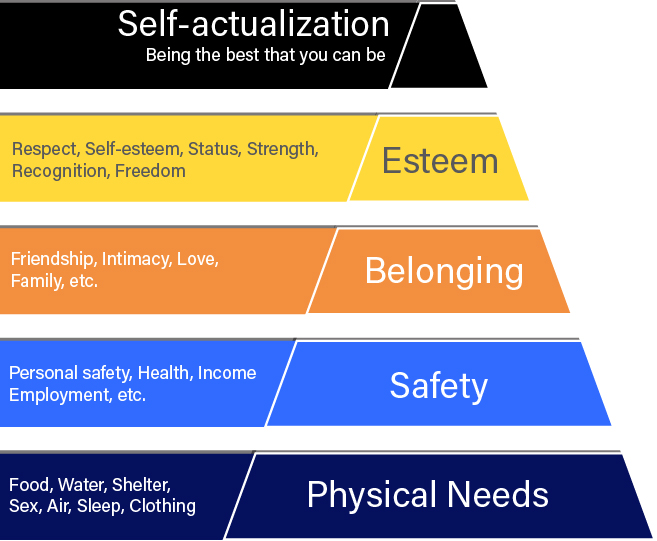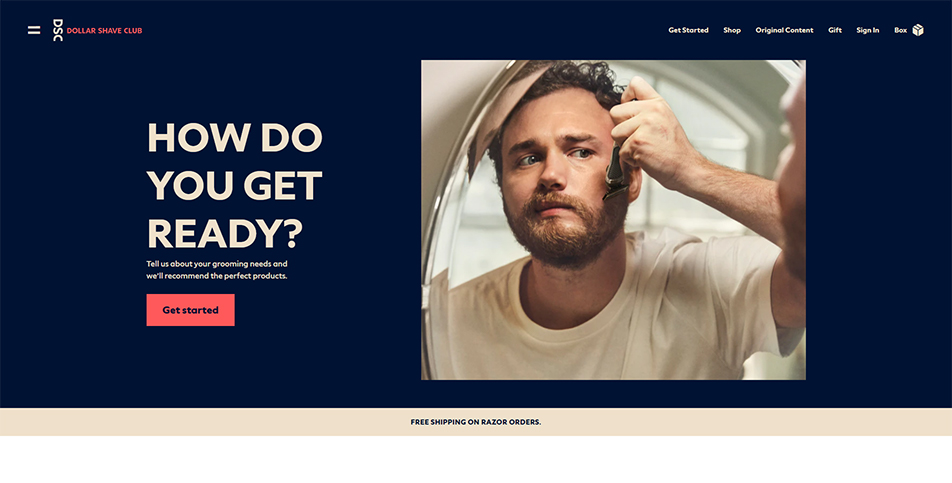Marketing is a communication tool that delivers messages to its audience. The secret to great marketing is tapping into a higher order need.
Marketing is a Communication Tool
At its most fundamental level, Marketing is first and foremost a communication tool. The creator or author has a message that he or she wants to convey to the user. Sometimes, we lose sight of this goal because we get distracted by all the eye catching effects and ‘cool’ features. However, if we fail in this seemingly simple task, marketing will fail to have the desired effect, which in most cases is dwell time, bounce, or conversion.
Communication (n) – a thing we all do, but don’t fully understand
Sarah Trenholm highlights the dilemma in attempting to define communication,
“Like a piece of luggage, it is overstuffed with all manner of odd ideas and meanings. The fact that some of these do fit, resulting in a conceptual suitcase much too heavy for anyone to carry, is often overlooked”
Communication is a complex blend of social, process, symbols, meaning, and environment West & Turner describe communications as a helical non-linear process which is cumulative, influenced by the past, present, and expectations for the future.
They view communication as a social process, meaning that it is an interactive and dynamic on-going interaction where the meaning, symbols, and environment all play a role. Since this purpose of this article is web design, not communication theory, we will explore a simplified model. However, it is important to realize the inherent complexities.
In our simplified model, we have a sender, who has an intended message that he or she wants to send to a receiver. The receiver will extract meaning from that message based content, symbols, and environment in which it is received.
The meaning is defined as what is extracted from the message by the receiver. The symbols are the images, designs, colors, fonts, etc. that are sent along with the message. Finally the environment is the setting in which the message is received.
This is critical in web design because so much of the extracted meaning will be impacted by the symbols surrounding the message (images, fonts, colors) and the environment (mobile, desktop, user experience) in which it is received.
Communication Goals
Presumably, we are creating a marketing campaign or strategy for a reason. We as designers, marketers, or other communicators are most likely trying to send a message that motivates, entertains, or informs our recipient. We hope the meaning extracted from our message leads to a desired outcome.
Our recipient has their own goals based on their own needs. They are presumably looking for information to help educate, entertain, and/or inform them to solve those needs.
The purpose behind web design is to ensure that both goals are met.
Goals are Driven By Need. Need Has a Major Impact on Meaning
The psychology of human needs goes back centuries, but our modern understanding of needs begins with Maslov.
Many will be familiar with Maslov’s Hierarchy of Needs . This model has been modified over the years to become more nuanced. For example, Kenrick argues from the addition of past-history, an update to reproductional needs, and the removal of the linear progression from one step to the next.
Maslov Has Evolved, But Still Remains Useful
The nuances are important because they highlight the inherent complexity of the human mind. However, unless you have the budget to invest heavily into market research, the simple Maslov model is still a useful tool, as long as you are mindful of its limitations.
Example of Choosing the Right Need Level
As we said, effective communication relies on the understanding of the recipient’s needs. Harry’s Shave Club offers a good example of where Maslov works and also, where more depth was required.
Harry’s is using a classical follower model. Where the second player needs to position itself against the leader. This can be successful if the communication goal is driven by a true need.
Harry’s Shave Club – A Follower Strategy
The “subscribe or buy whenever they want” and “never upcharge” claims appeal to the safety needs level. When you do not have enough disposable income, income security is an issue. However, choosing the name of the company to include “club” implies they are striving to hit the “belonging” level.
This illustrates two points. First, the needs states overlap and are not linear and not mutually exclusive. Therefore, you have the ability to appeal to one or more.
Second, the choice of which level to appeal has a real impact. Harry’s Shave Club’s follower approach has some risk as it focuses more on price. It risks being undercut by a competitor (losing its niche) or positioned as the poor man’s brand by the leader. Neither of which is positive for the brand.
Dollar Shave Club – A Leader Strategy
If you would like to get a sense of the advertising and psychology behind the Dollar Shave Club (DSC), I would encourage you to visit this advertising compilation.
If you start at minute two of the four minute video, you can get a sense of how they used clever insights to leverage a security need, lower-cost razor for younger men with less disposable income into a higher need of belonging.
In their advertising, you will see that the leveraged ‘being in the know’ meant you were smarter. You were not being fooled like others. In doing so, you rise up a level or two on the needs hierarchy.
DSC could have been just a low cost alternative to Gillette. But, they were smarter. Through smart use of insights and communications, they transformed a security need into something more.
As such, they created a powerful barrier to entry that Gillette couldn’t easily overcome. They created a consumer base who felt they were part of a club. Being part of this club means you’re savvy. You’re smarter than the average buyer. Therefore, your willingness to leave is lessened.
Follower’s Dilemma
Because of the leader’s smart use of communication, this puts any follower in a difficult position.
This is the risk of the classic follower positioning. The follower is defined by the leader, and it usually causes the follower to differentiate a level below the leader.
Harry’s may strive to hit the belonging level, but in order to be successful, I would argue that they need to offer more than greater security. They would need to offer something more to their users, so they could feel smarter, savvier, etc. than DSC users. Otherwise, Harry’s risks being outmaneuvered by another lower cost brand.
In Summary
When thinking about developing your marketing positioning, messaging, and campaigns, it is worth remembering:
- Marketing is first and foremost a communication tool
- Communication is dynamic and the extracted meaning is heavily impacted by the recipient’s needs
- Effective communication anticipates those needs so the extracted meaning more closely aligns with the intended message.
- Maslov’s model is a useful construct to think about needs, but may require refinement based on the current circumstances.
- When crafting a marketing message, always try to tie the benefit as high up the pyramid as you can.
If you would like to learn more, we share how these principles can be applied to web design. [note to reviewer – I believe this is OK. if not, please remove. No desire to violate policies.]


